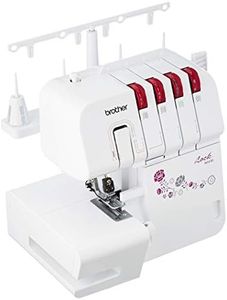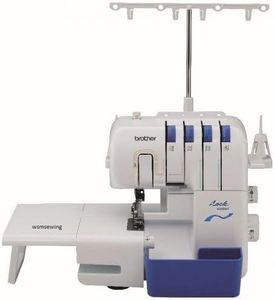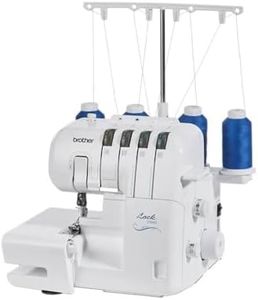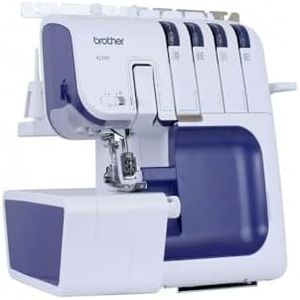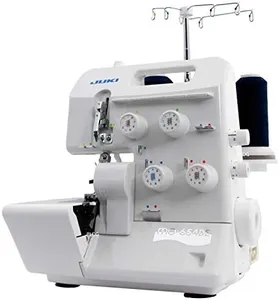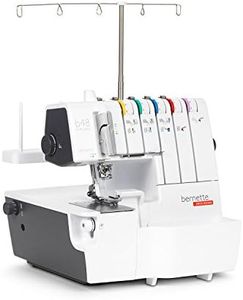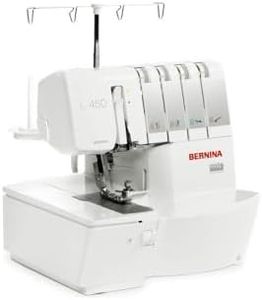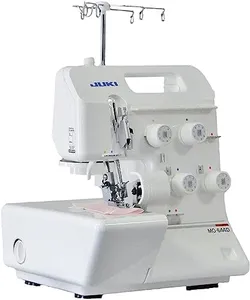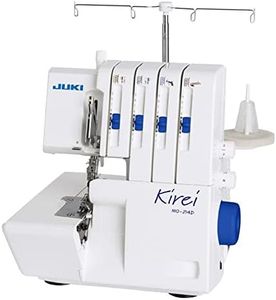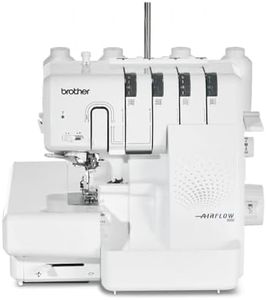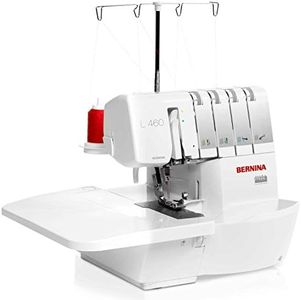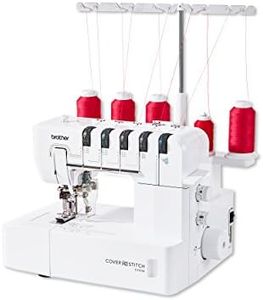We Use CookiesWe use cookies to enhance the security, performance,
functionality and for analytical and promotional activities. By continuing to browse this site you
are agreeing to our privacy policy
10 Best Overlock Machine
From leading brands and best sellers available on the web.Recommended lists
Buying Guide for the Best Overlock Machine
Choosing the right overlock machine, also known as a serger, can significantly enhance your sewing projects by providing professional-quality seams, hems, and finishes. When selecting an overlock machine, it's important to consider your sewing needs, the types of fabrics you work with, and the features that will make your sewing experience more efficient and enjoyable. Understanding the key specifications of overlock machines will help you make an informed decision that aligns with your sewing goals.Number of ThreadsThe number of threads an overlock machine can use is crucial because it determines the types of stitches the machine can create. Overlock machines typically range from 2 to 5 threads. A 2-thread machine is suitable for lightweight fabrics and basic edging, while a 3-thread machine is ideal for general seaming and finishing. A 4-thread machine offers a strong seam with a built-in safety stitch, making it great for knit fabrics. A 5-thread machine provides an additional chain stitch, which is perfect for heavy-duty sewing and professional finishes. Choose based on the complexity and type of projects you plan to undertake.
Differential FeedDifferential feed is a feature that allows you to adjust the feed dogs to prevent fabric stretching or puckering, especially when working with stretchy or lightweight fabrics. This is important for achieving smooth, even seams. Machines with adjustable differential feed let you control the fabric feed ratio, which is useful for creating gathers or ruffles as well. If you frequently work with a variety of fabric types, a machine with a good differential feed system will be beneficial.
Stitch Width and LengthStitch width and length settings determine how wide and long your stitches will be. This is important for customizing the finish of your seams and hems. Machines with adjustable stitch width and length offer more versatility, allowing you to tailor the stitch to the fabric and project at hand. If you work on diverse projects, look for a machine that offers a wide range of adjustments to accommodate different sewing needs.
Ease of ThreadingThreading an overlock machine can be complex, so ease of threading is an important consideration. Some machines offer color-coded threading guides or even automatic threading systems to simplify the process. If you're new to using an overlock machine or prefer a hassle-free setup, look for models that emphasize easy threading features to save time and reduce frustration.
Built-in Rolled HemA built-in rolled hem feature allows you to create narrow, professional-looking hems without changing the presser foot or settings extensively. This is particularly useful for finishing edges on lightweight fabrics like silk or chiffon. If you frequently sew garments or home decor items that require delicate hems, a machine with a built-in rolled hem function will be advantageous.
Adjustable Presser Foot PressureAdjustable presser foot pressure allows you to modify the pressure exerted on the fabric by the presser foot. This is important for ensuring smooth feeding of different fabric thicknesses and types. If you work with a variety of fabrics, from delicate silks to heavy denims, having the ability to adjust the presser foot pressure will help you achieve consistent stitch quality across all your projects.
